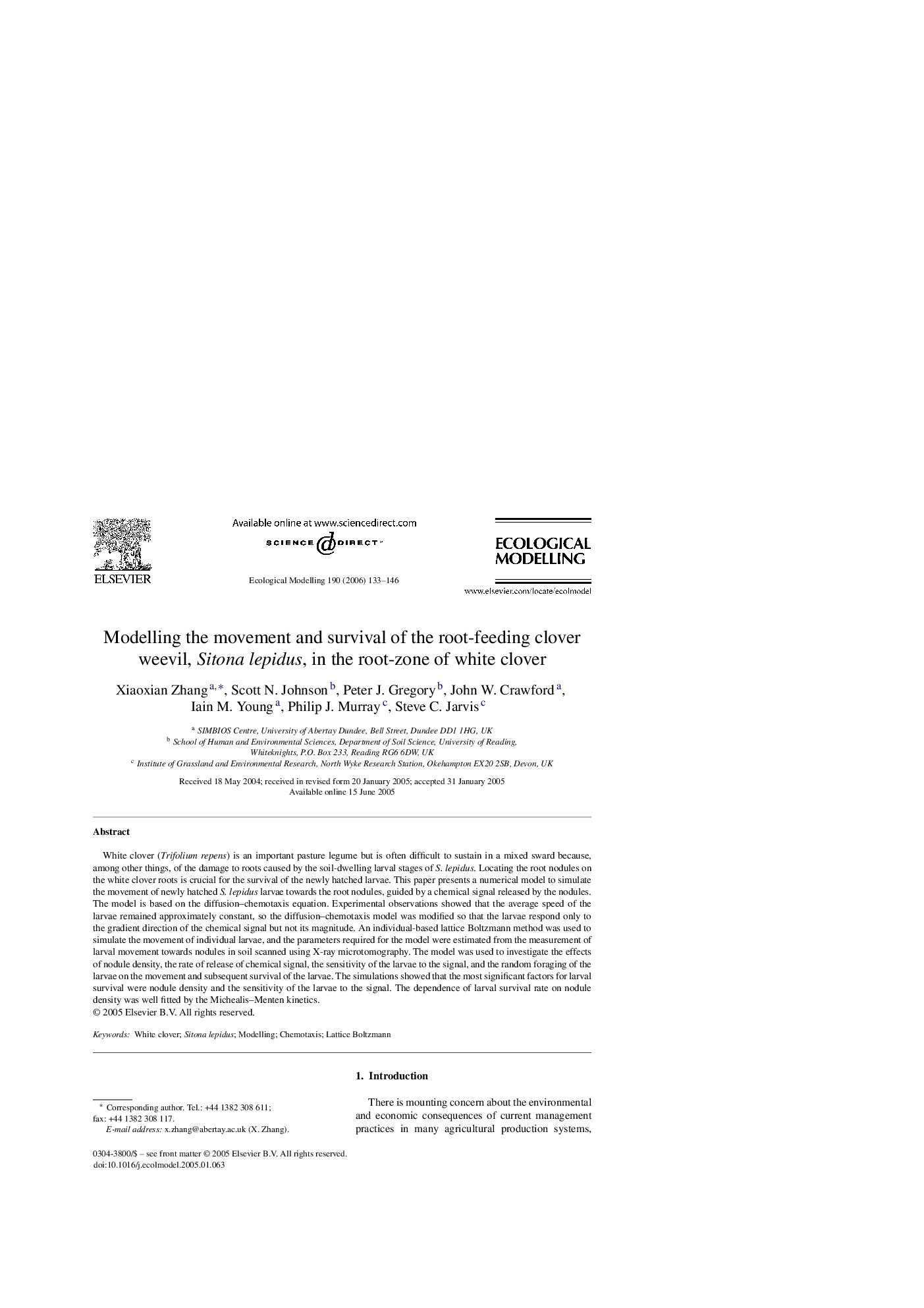| Article ID | Journal | Published Year | Pages | File Type |
|---|---|---|---|---|
| 4379405 | Ecological Modelling | 2006 | 14 Pages |
White clover (Trifolium repens) is an important pasture legume but is often difficult to sustain in a mixed sward because, among other things, of the damage to roots caused by the soil-dwelling larval stages of S. lepidus. Locating the root nodules on the white clover roots is crucial for the survival of the newly hatched larvae. This paper presents a numerical model to simulate the movement of newly hatched S. lepidus larvae towards the root nodules, guided by a chemical signal released by the nodules. The model is based on the diffusion–chemotaxis equation. Experimental observations showed that the average speed of the larvae remained approximately constant, so the diffusion–chemotaxis model was modified so that the larvae respond only to the gradient direction of the chemical signal but not its magnitude. An individual-based lattice Boltzmann method was used to simulate the movement of individual larvae, and the parameters required for the model were estimated from the measurement of larval movement towards nodules in soil scanned using X-ray microtomography. The model was used to investigate the effects of nodule density, the rate of release of chemical signal, the sensitivity of the larvae to the signal, and the random foraging of the larvae on the movement and subsequent survival of the larvae. The simulations showed that the most significant factors for larval survival were nodule density and the sensitivity of the larvae to the signal. The dependence of larval survival rate on nodule density was well fitted by the Michealis–Menten kinetics.
